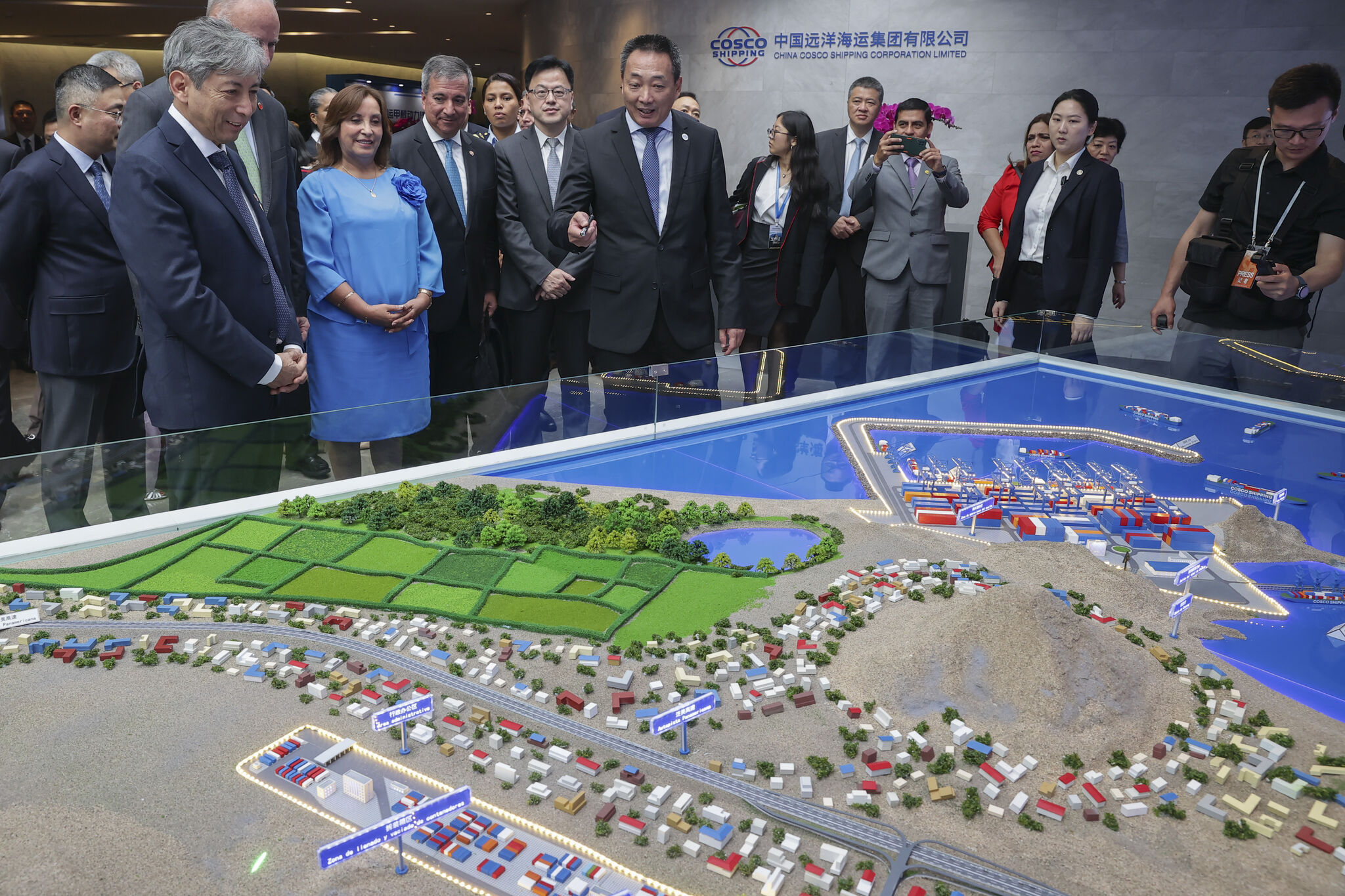The relationship between China and Peru appears to be reciprocal: the Asian giant seeks natural and strategic resources in the Andean country, while Peru designs tailor-made laws to foster Chinese investments in electromobility.
As previously reported by Mobility Portal Latinoamérica, the President of Peru took advantage of her stay in China to meet with the President of BYD, the world’s largest electric vehicle manufacturer.
Boluarte’s proposal was clear: “Instead of bringing copper and lithium from Peru to China, go to Peru to set up your assembly industry.”
What did she propose specifically? The construction of an electric vehicle assembly plant.
The focus is on the Port of Chancay: the Peruvian government seems willing to create an appropriate regulatory framework, including zero tariffs, to attract private investments and position itself as a strategic hub between South America, Asia, and Oceania.
In this context, the Minister of Transport and Communications, Raúl Pérez Reyes, announced plans to replace public transport units with electric vehicles in Peru. This would be possible with financing from China to facilitate the transition.
How will they achieve this? Pérez Reyes revived a bill, developed jointly with the Ministry of Economy and Finance (MEF), to eliminate import taxes on electric vehicles destined for public transport.
Currently, there are 25 bills related to electromobility competing for prominence in the country. This particular bill was presented last year and then forgotten.
Legislative silence was broken a few weeks ago when the Congress’ Economic Commission approved bill 1054, the “Law for the Promotion and Development of Green and Zero-Emission Transport Nationwide,” which includes tax incentives for the import and sale of electric vehicles.
The difference is that the latter initiative, driven by the private sector, focuses on the import and sale of electric vehicles, while the government now aims to boost the public transport segment. The interests and perspectives differ.
Without a doubt, Peruvian authorities are looking to attract Chinese investments with the regulatory framework proposed by the MEF.
According to last year’s announcements, the framework has three main pillars to achieve the adoption of electric vehicles, specifically in the truck and bus segments.
“The idea is that when China visits us for APEC, this agreement can be signed to replace, over the next three or four years, a significant number of taxis in Lima or the 20,000 vehicles carrying up to 25 passengers, known as combis,” emphasized the Minister of MTC during the presidential tour.
It is worth noting that the Peruvian head of government met with President Xi Jinping and formally invited him to the inauguration of Chancay in November. Additionally, she held a meeting with the President of Cosco Shipping, the exclusive operator of the port.
What does the MEF project say about promoting electric public transport?
One of the points in the document presented by the MEF last November discusses financing.
The first measure would be the creation of the Environmental Improvement Fund for Transport (FONAM) with an initial amount of 500 million soles.
The objective of FONAM is to promote the financing of guarantee or assurance funds to drive the transition to efficient and sustainable transport, which will allow access to low-interest rates.
The special regime to reduce tax obligations is also included.
Namely: Depreciation of up to 20 per cent annually for charging infrastructure acquired between 2024-2027 and depreciation of up to 50 per cent annually for electric or natural gas buses and trucks acquired between 2024-2027.

Another section is the incentive for the removal of old and polluting vehicles. The idea is to take unfit units out of circulation through the scrapping program.
The final axis of the MEF proposal is to reduce the acquisition cost.
This section is characterised by the refund of the General Sales Tax (IGV) for electric vehicles and Natural Gas (CNG and LNG) vehicles used for passenger, cargo, and tourist transport.
Additionally, the plan includes the exemption from the Municipal Vehicle Property Tax, extending it to electric or CNG trucks and tractors no more than three years old.
As a non-tax benefit, the plan establishes the granting of an additional bonus through the Energy Social Inclusion Fund (FISE) for companies that decide to use their scrapping bonus to acquire a new sustainable vehicle.
The situation of electric public transport and other incomplete proposals
When searching for “Electromobility Law in Peru” on Google, there are many proposals, most of them incomplete, as detailed by Mobility Portal Latin America in several articles.
Related to public transport is the initiative of the Urban Transport Authority for Lima and Callao (ATU) that reached the Congress of the Republic in 2022.
“For us, sustainable mobility is a priority. But to make it a reality, we need a regulatory framework that allows it and accelerates the process, which is currently a bit slow,” said Claudia Ato Rodríguez, deputy director of the Environmental and Social Affairs Directorate at ATU.
The proposal for the new Electromobility Law aimed to declare the integrated transport system of public necessity and promote clean energy. It also emphasised the General Sales Tax, the Vehicle Tax, and interest rates to facilitate the acquisition of electric vehicles.
Additionally, it proposed creating a multisectoral commission to analyse electromobility in the Executive Branch and other aspects that would accelerate the process.
It also aimed to create a new business model in the electric bus tendering scheme, stressing the need for a guarantee fund.
Earlier this year, the ATU participated in the launch of the Emob Peru project, a joint initiative promoted by the United Nations Development Programme (UNDP) and the Ministry of the Environment (Minam) to promote cleaner public transport.
According to their statements, they work together with electric power companies, transport operators, bus manufacturers, and various public sector actors.
One of the objectives is to provide transport companies with the possibility of extending their operating authorisations as long as they commit to using vehicles with clean or low-pollution technologies.
Peru: a treasure trove of natural resources for EVs
Peru stands out for its wealth of mineral resources, being the third-largest copper producer in the world, surpassed only by Chile and the Congo. It is no coincidence that China has set its sights on the country.
These resources are the foundation upon which Peru plans to build an electric vehicle industry. This is reflected in Boluarte’s proposal to process resources locally rather than exporting them.
It is worth remembering that the Free Trade Agreement between the two nations is in effect, and they will also sign a treaty to avoid double taxation.
The country’s copper reserves amount to 110 million tonnes, with a growth potential that could see Peru surpass Chile as the world’s leading producer of this metal.
Moreover, Peru has significant lithium reserves, with concentrations of up to 4000 parts per million, a figure notably higher than those of its neighbours Argentina, Bolivia, and Chile.
Copper, essential for the automotive industry, can be transformed into components such as wiring and electric motors, while lithium is crucial for battery production.
Read more: Latin America debates tariffs on Chinese EV brands





